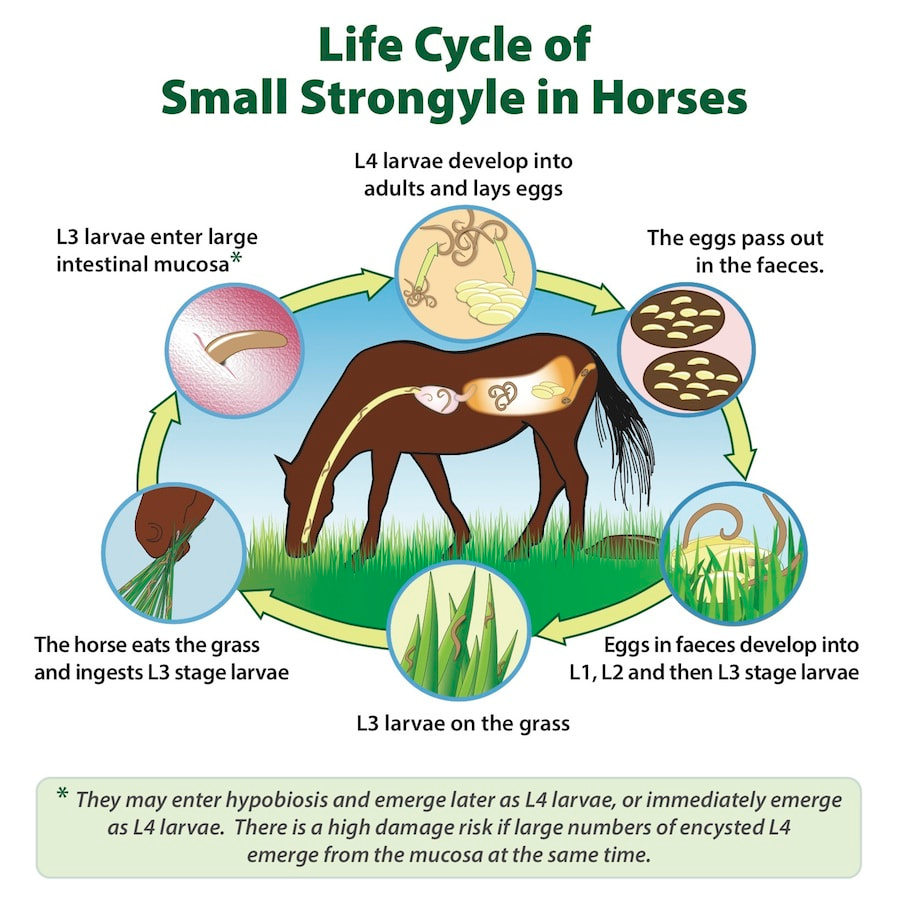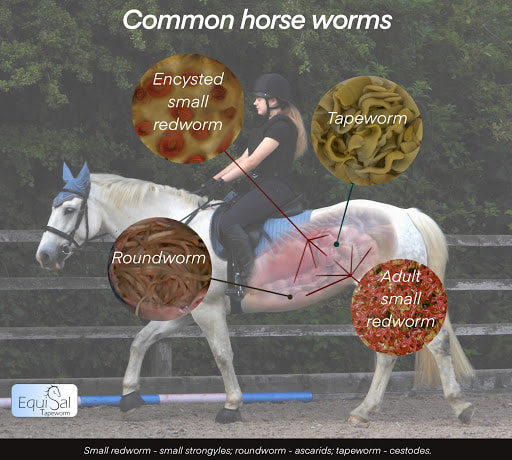Worming
We follow a veterinary advised worming schedule here on our farms. A lot of the animals that come into us have a high burden of worms. We quarantine, sample egg count and treat every animal on our farms. Worm infestation can have a detrimental effect on equines and young stock are especially vulnerable.
Always consult veterinary advise if you have any queries in relation to worm infestations and before starting a worming program.
Spring (February/March)
• Target – large strongyles and tapeworm
o Ivermectin
o Praziquantel
• For all horses < 2 years particularly if in groups of 4 or more horses
• If horses have not thrived (<BCS 2.5) during the summer
Exceptions:
• Horses >5 - <10 years old, that are in fields with <5 horses and have negative FEC
o NOTE: must have had equest -pramox in winter.
Summer (May/June)
• Target – large strongyles
o Ivermectin only
• FEC to determine necessity for treatment
Exceptions:
• For all horses < 2 years particularly if in groups of 4 or more horses
• If horses have not thrived (<BCS 2.5) during the summer
Autumn (Aug)
• Re-examine horses that hadn’t been thriving
• Treatstock < 2year or in large groups
• Target – large strongyles and tapeworm (optional)
o Ivermectin
o Praziquantel
- Combination treatment
Exceptions:
• Horses >5 - <10 years old, that are in fields with <5 horses and have negative FEC
o NOTE: must have had equest -pramox in winter.
Winter (Oct/Nov)
• Target – cyathostomes (early larvae stages and adults)
o Moxidectin only
o ALL horses FEC prior and FECRT post
• Target – as above and tapeworms
o Young stock between 8months and 2 years
o FEC prior and FECRT post
o Only necessary if equimax not given in Aug
Foals
o 6 weeks – Panacur 5mg/kg
o 3 or 4 months ivermectin
o 6 months ivermectin/praziquantel
o 8 months ivermectin
o 12 months moxidectin
o Mare’s – done the month before foaling - ivermectin
Always consult veterinary advise if you have any queries in relation to worm infestations and before starting a worming program.
Spring (February/March)
• Target – large strongyles and tapeworm
o Ivermectin
o Praziquantel
• For all horses < 2 years particularly if in groups of 4 or more horses
• If horses have not thrived (<BCS 2.5) during the summer
Exceptions:
• Horses >5 - <10 years old, that are in fields with <5 horses and have negative FEC
o NOTE: must have had equest -pramox in winter.
Summer (May/June)
• Target – large strongyles
o Ivermectin only
• FEC to determine necessity for treatment
Exceptions:
• For all horses < 2 years particularly if in groups of 4 or more horses
• If horses have not thrived (<BCS 2.5) during the summer
Autumn (Aug)
• Re-examine horses that hadn’t been thriving
• Treatstock < 2year or in large groups
• Target – large strongyles and tapeworm (optional)
o Ivermectin
o Praziquantel
- Combination treatment
Exceptions:
• Horses >5 - <10 years old, that are in fields with <5 horses and have negative FEC
o NOTE: must have had equest -pramox in winter.
Winter (Oct/Nov)
• Target – cyathostomes (early larvae stages and adults)
o Moxidectin only
o ALL horses FEC prior and FECRT post
• Target – as above and tapeworms
o Young stock between 8months and 2 years
o FEC prior and FECRT post
o Only necessary if equimax not given in Aug
Foals
o 6 weeks – Panacur 5mg/kg
o 3 or 4 months ivermectin
o 6 months ivermectin/praziquantel
o 8 months ivermectin
o 12 months moxidectin
o Mare’s – done the month before foaling - ivermectin





